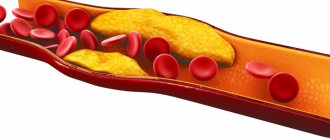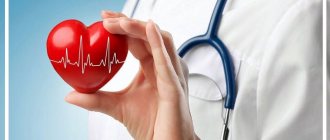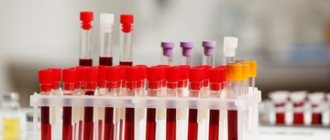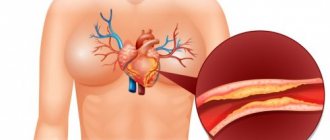A lipidogram is a medical analysis that talks about lipid, that is, fat metabolism in the body. To perform this study, venous blood is required.
You all know very well that it is important to maintain a balance of proteins, fats and carbohydrates in your diet. So in our body it is also very important that fat, carbohydrate and protein metabolism are normal. The level of fat metabolism is determined by a simple blood test for a lipid profile .
The analysis is completed in just 1 day - And you have the whole truth about fat metabolism!
Requirements for passing the analysis:
1) Strictly on an empty stomach, in the morning, last meal at 19.00. In the morning you can drink plain water 2) The day before, exclude physical activity and intake of fatty foods and alcohol 3) Do not smoke before taking the test and exclude emotional stress.
Indications for taking a lipid profile test:
1) Age 2) Preventive examination, recommended for everyone once a year after 25 years 3) Excess weight 4) Diagnosis of dyslipidemia 5) Liver and kidney diseases 6) Endocrine diseases (diabetes mellitus, hypothyroidism) 7) High blood pressure, hypertensive surges Aggravated heredity for cardiovascular diseases among close relatives (hypertension, coronary heart disease, heart attacks, strokes, obesity) 9) Sedentary lifestyle 10) Bad habits - smoking, drinking alcoholic beverages 11) Diseases that require control of cholesterol levels 12) Taking medications that affect fat metabolism.
Aggravated heredity for cardiovascular diseases among close relatives (hypertension, coronary heart disease, heart attacks, strokes, obesity) 9) Sedentary lifestyle 10) Bad habits - smoking, drinking alcoholic beverages 11) Diseases that require control of cholesterol levels 12) Taking medications that affect fat metabolism.
Decoding the result:
1). Cholesterol is the most important indicator of lipid metabolism.
80% of cholesterol is formed in the body itself in the liver, intestines, kidneys, adrenal glands, gonads, and only 20% comes from food from the outside with products of animal origin (eggs, butter, meat). The level of cholesterol in the blood largely depends on age and gender.
Cholesterol is ABOVE normal:
- hereditary lipoproteinemia - liver diseases - glomerulonephritis, chronic renal failure - hypothyroidism - gout - diabetes - pregnancy - coronary heart disease - malignant diseases of the pancreas and prostate - foods rich in cholesterol and unsaturated fatty acids - taking certain medications such as androgens , diuretics, etc.
Cholesterol is BELOW normal:
- cachexia, fasting - burns - malabsorption in the intestine - severe acute diseases and infections - sepsis - hyperthyroidism - hypolipoproteinemia - mental retardation - taking medications that lower cholesterol - low cholesterol foods
2) Triglycerides are the main lipids in the blood that provide energy to cells.
Mainly supplied with food, and slightly synthesized in the liver and intestines.
Triglycerides ABOVE normal:
- primary hypertriglyceridemia (familial according to different phenotypes) - coronary heart disease, myocardial infarction, angina pectoris, atherosclerosis - obesity - viral hepatitis and cirrhosis - diabetes mellitus - hypothyroidism - acute or chronic pancreatitis - pregnancy - thalassemia
Triglycerides BELOW normal: - hypolipoproteinemia - hyperthyroidism-hyperparathyroidism - malnutrition - malabsorption syndrome (malabsorption in the intestine) - chronic lung diseases - taking heparin, vitamin C, progestins
3). Cholesterol - HDL - high-density lipoproteins or "good" cholesterol - are lipoproteins that carry cholesterol from the peripheral blood to the liver. Women have higher HDL levels than men.
4). Cholesterol - LDL - low-density lipoproteins or “bad” cholesterol LDL transports lipids, including cholesterol, from one cell to another. An LDL level of more than 3.37 mmol/l indicates a factor in the development of atherosclerosis, and more than 4.14 indicates a high risk of developing atherosclerosis and coronary heart disease.
5). VLDL - very low density lipoproteins - a marker of atherogenicity. Transports exogenous lipids in plasma. They transport triglycerides from the liver to peripheral vessels.
Based on these 5 indicators of the lipid spectrum, the ATHEROGENIC INDEX is calculated - this is the risk of developing atherosclerosis!
The norm for a healthy person is 3-3.5. If AI is higher than normal, then “bad” cholesterol predominates in the body.
Dear friends! Now you know everything about such an important and simple analysis - a lipid profile!
Why is it necessary to do a lipid profile?
The content of the article
A lipidogram allows you to assess the risk of developing plasma atherosclerosis even with normal levels of total cholesterol.
A lipidogram or lipid profile includes the study of the following indicators:
- triglycerides;
- total cholesterol;
- low density lipoproteins - LDL;
- high density lipoproteins - HDL.
Their values provide information about the state of lipid metabolism and metabolic disorders and, therefore, about the risk of developing atherosclerosis and cardiovascular complications, such as:
- Coronary artery stenosis and myocardial infarction;
- Stroke.
Factors in the development of atherosclerosis:
- elevated lipid levels - triglycerides, total cholesterol and LDL fraction;
- lower HDL cholesterol levels;
- hypertension;
- smoking;
- diabetes;
- increased levels of fibrinogen, homocysteine;
- obesity;
- poor diet rich in saturated fats;
- low physical activity;
- old age.
Relevance of the analysis
Specialists in our department prescribe a lipid profile if the following diseases are suspected:
- Atherosclerosis;
- Coronary vascular disease;
- Myocardial infarction;
- IHD (coronary heart disease);
- Vascular pathologies of the brain.
The study is prescribed for both diagnostic and preventive purposes, especially for patients at risk.
Fats are present in the blood of any person in certain concentrations. They are deposited in tissues and participate in metabolic processes that ensure the normal functioning of the body. Disorders of fat metabolism, such as increased cholesterol levels, can lead to the development of pathological processes. The main ones are atherosclerosis, ischemia, heart attacks and strokes.
The test may be part of a routine medical examination. Our specialists prescribe it to patients who are at risk according to certain criteria. If imbalances in fat levels are detected, your doctor may prescribe preventive therapy. It includes lifestyle correction - normalization and stabilization of body weight, diet, and physical exercise. In some situations, medications are prescribed.
Normal lipid profile or control values
In a healthy person, the following values should be maintained:
| total cholesterol | less than 190 mg/dl |
| LDL fraction | <115 mg/dL – for low to moderate cardiovascular risk |
| <100 mg/dL – for high cardiovascular risk | |
| <70 mg/dL – for very high cardiovascular risk | |
| HDL for men | more than 40 mg/dl |
| HDL for women | more than 45 mg/dl |
| triglycerides | less than 150 mg/dl |
Preparing for the test
Blood is donated for lipid profile in the morning. To determine the level of each lipid fraction, there are its own preparatory rules:
- Total cholesterol - given at any time of the day without the need for a twelve-hour fast. For the objectivity of the result, it is recommended to perform the analysis two months after surgery, delivery, injury, infection or heart attack;
- PAP – requirements are similar to the previous paragraph;
- LDL - taken only in the morning, on an empty stomach, after a twelve-hour fast (excluding any food and drinks except water). The day before blood sampling, it is important to exclude any alcohol;
- Triglycerides - requirements are similar to the previous paragraph.
When taking a general lipid profile (with the study of all markers), you must adhere to the rules of a twelve-hour fast and donate blood in the morning. During the day before the procedure, it is necessary to avoid any alcoholic drinks and alcohol-containing medications (syrups and drops for oral administration). It is not advisable to smoke an hour before the test. Psycho-emotional and physical stress of increased intensity should be excluded immediately before taking biological material.
Analysis results in our laboratory and research base are prepared within 24 hours. After this, they are assessed by a supervising specialist. A detailed study may include additional indicators - the levels of apolipoprotein A1 and apolipoprotein B. If necessary, the concentration of very low density cholesterol (VLDL) is studied.
Who should have a lipid profile?
Lipid profile testing is recommended for patients with problems such as:
- high cholesterol/lipid metabolism disorders;
- if a family member is diagnosed with a lipid metabolism disorder;
- suspicion of hereditary hypercholesterolemia;
- family history of myocardial infarction, especially at a young age;
- overweight and obesity;
- smoking.
In addition, a lipid profile study is useful for:
- monitoring lipid-lowering therapy;
- monitoring the condition of patients who have suffered myocardial infarction and ischemic stroke.
How to prepare for the test?
Blood test material should be taken on an empty stomach, that is, with an 8-12 hour break from the last meal. The recommendation applies to all studies because changes caused by food intake are difficult to predict and the values obtained are interpreted in comparison with reference values established under standard conditions.
The day before the blood test, you should avoid heavy and fatty foods and alcohol consumption.
On the day of the test
Immediately before taking a blood test, you are allowed to drink a small amount of water.
It is recommended to collect blood in the morning from 7:00 to 10:00. If blood is collected at other times of the day, this should be taken into account when interpreting the test results.
Immediately before collection, a 15-minute rest is advisable.
Evaluation of analysis results
When issuing the analysis result, the form will indicate the value obtained, as well as the boundaries to which to strive. These boundaries are not average intervals for a specific gender and age, as is usually used in reference values. When managing patients at risk of cardiovascular complications, doctors are primarily guided not by reference values, but by a decision-making threshold - target values of lipid profile indicators, according to the Recommendation of the third expert report of NCEP ATP III (The National Cholesterol Education Program Adult Treatment Panel III). These figures are calculated in accordance with population and clinical criteria, supported by numerous statistical data and approved by WHO.
Decision threshold criteria are very important diagnostic data, based on which the doctor, along with the patient’s test results and relying on his experience, knowledge and special risk calculation methods, can determine the most likely prognosis and select treatment for a particular patient.
The most well-known technique that helps a doctor determine the degree of risk for a patient is the so-called SCORE scale - Systematic COronary Risk Evaluation, which allows one to calculate the risk of death from cardiovascular diseases depending on the patient’s cholesterol level and blood pressure.
Lipid profile results
Total cholesterol is increased when:
- various forms of hypercholesterolemia;
- violation of the outflow of bile due to obstruction of the biliary tract, cholestasis; pancreatic diseases;
- hypothyroidism;
- diabetes;
- alcoholism;
- type of diet high in fat.
A decrease in total cholesterol is observed with:
- alipoproteinemia;
- fatty diarrhea with malabsorption syndromes - impaired absorption of essential nutrients;
- myeloproliferative diseases - uncontrolled growth of blood cells;
- hyperfunction of the thyroid gland.
An increase in triglyceride levels is observed with:
- hereditary and acquired dyslipidemias;
- metabolic diseases - diabetes, gout;
- overweight and obesity;
- liver diseases and alcoholism;
- kidney diseases;
- hypothyroidism of the thyroid gland.
A decrease in triglyceride levels occurs when:
- hyperthyroidism;
- abetalipoproteinemia – a disease that prevents the normal absorption of fats and fat-soluble vitamins from food;
- malnutrition;
- malabsorption - insufficient absorption of nutrients in the digestive tract.
LDL cholesterol increases when;
- hypercholesterolemia;
- hyperlipoproteinemia;
- a diet high in saturated fat;
- hypothyroidism;
- diabetes;
- chronic renal failure;
- anorexia;
- porphyria – a hereditary disorder of pigment metabolism with an increased content of porphyrins in the blood and tissues and their increased excretion in urine and feces.
A decrease in LDL cholesterol occurs when:
- hypo- or abetalipoproteinemia;
- overactive thyroid gland;
- chronic anemia;
- severe damage to the liver and biliary system.
HDL cholesterol levels should be maintained within normal limits as it is a factor that reduces the risk of cardiovascular disease. This is achieved through proper nutrition, moderate alcohol consumption, regular exercise and a healthy lifestyle.
A decrease in HDL cholesterol occurs with obesity, elevated triglyceride levels, and taking certain medications - androgens, diuretics, beta-blockers and others.
Who is at risk for atherosclerosis
- Men over 35 years old.
- People with excess body weight (metabolic syndrome, obesity).
- Smokers.
- Patients with high blood pressure.
- Women with PCOS (polycystic ovary syndrome).
- Patients with type 2 diabetes.
- Patients whose close relatives have been diagnosed with atherosclerosis and cardiovascular diseases.
- Patients already suffering from atherosclerosis and cardiovascular diseases.
- Patients leading a sedentary lifestyle.
- Patients who abuse alcohol.









